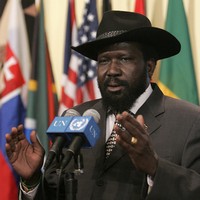Since the spring of 2010, South Sudan has been facing an onslaught of militia activity in Unity, Upper Nile and Jonglei states. For the most part, the government has pursued an “amnesty and integration” policy toward these militias, whereby members are offered amnesty for their past actions and integrated into the Southern People’s Liberation Army (SPLA), the former rebel group that now comprises the majority of South Sudan’s official security forces. The notable exception to this approach was George Athor, the rebel general who arguably posed the greatest internal threat to the government. Having refused multiple government overtures to persuade him to return to the fold, Athor was killed in December by the SPLA. Last month, soldiers loyal to Athor signed a cease-fire with the government and agreed to integrate into the SPLA, marking the last of this type of militia movement to lay down its arms. Nonetheless, South Sudan’s struggle with militias may not be over.
During Sudan’s second civil war from 1983-2005, successive regimes in Khartoum used divide-and-rule tactics to weaken the SPLA by funneling arms, food and other supplies to the SPLA’s rivals in Southern Sudan. By the time the Comprehensive Peace Agreement (CPA) was signed in 2005, more than 50,000 men were members of up to 60 so-called Other Armed Groups, which included rivals to the SPLA such as the South Sudan Defence Forces. Notably, representatives from these groups were excluded from the North-South peace negotiations that culminated in the CPA. Recognizing the potential for these groups to become spoilers to the peace process, Salva Kiir, president of the then-autonomous region of Southern Sudan, issued the Juba Declaration in January 2006. The declaration initiated the government’s amnesty and integration policy, offering members of various Southern militias amnesty for all war-related activities in exchange for their loyalty to the government of Southern Sudan and integration into the SPLA. Though not all militia members chose to integrate into the SPLA, this policy provided a measure of stability in Southern Sudan between 2006 and 2010.
Yet, the amnesty and integration policy presented several complications, as concurrently to its efforts to demobilize ex-combatants the government sought to transform the military from a guerrilla army to a leaner, more professionalized conventional force. This would ideally reduce the burden that the SPLA’s personnel costs imposed on the government budget and allow the government to deliver a “peace dividend” to the population. However, after decades of marginalization and conflict, Southern Sudan’s economy lacked alternative livelihoods, and Juba was all too aware of the threats that unemployed ex-combatants would present to sustained peace. In addition, the combination of the Juba Declaration’s impact and unresolved wartime animosities within the South made the SPLA an unwieldy and deeply fragmented force. Not only did the amnesty and integration policy inflate the officer corps, but it also deepened divisions within the military, as longtime SPLA soldiers felt that integrated forces were being rewarded for treachery. This sentiment was especially pronounced with regard to officers, such as Peter Gadet, who repeatedly defected, only to sign subsequent cease-fires with the government, possibly in order to negotiate better integration deals providing money, promotions and food -- as well as positions in the government and military -- for the men under their command. On top of that, the integration process proceeded at a snail’s pace, causing recently integrated soldiers to feel marginalized and uncertain of their future within the SPLA.

